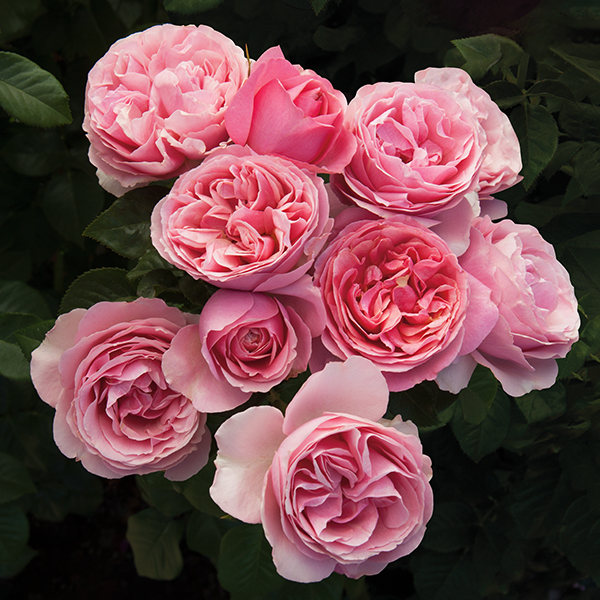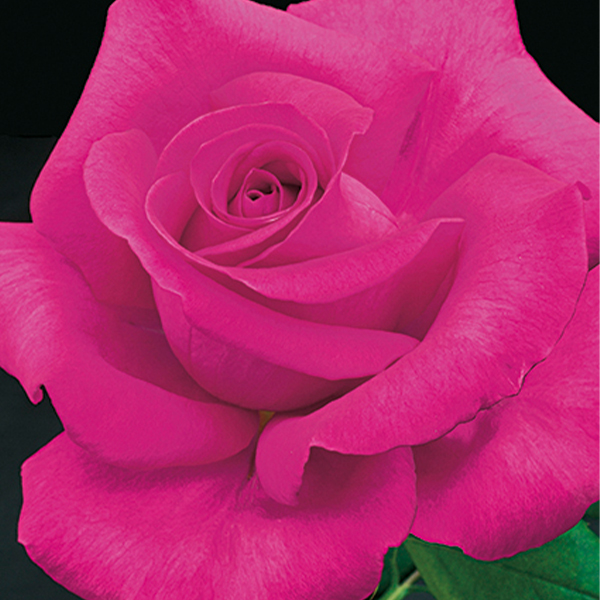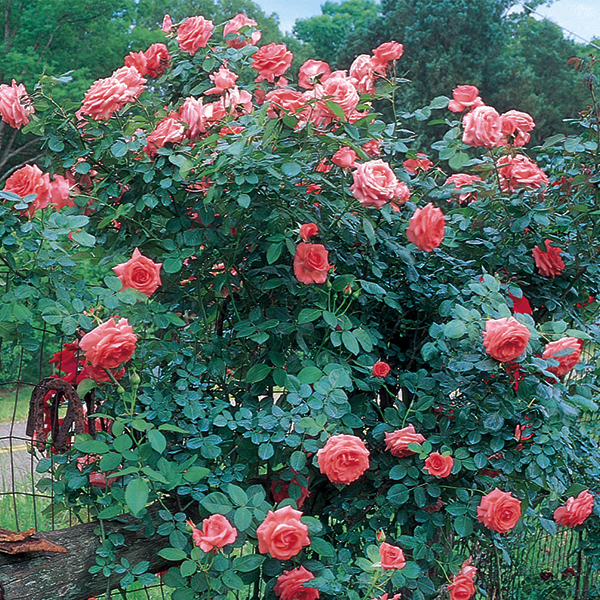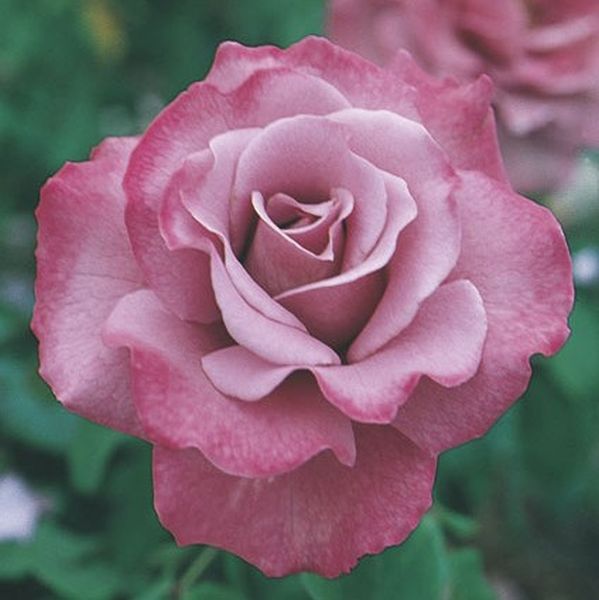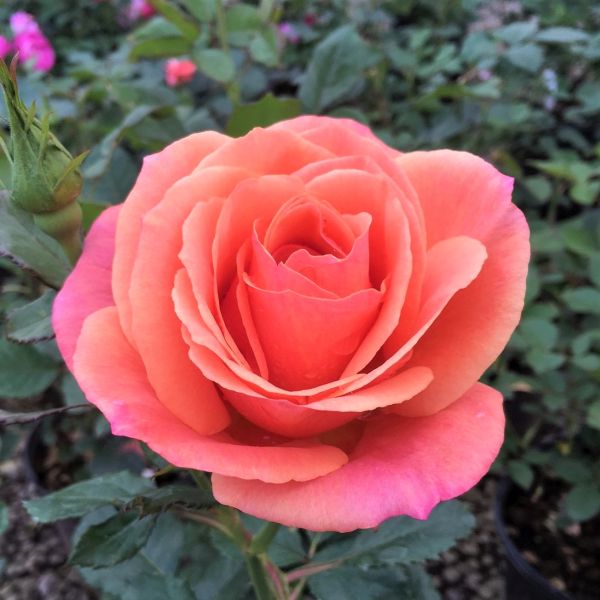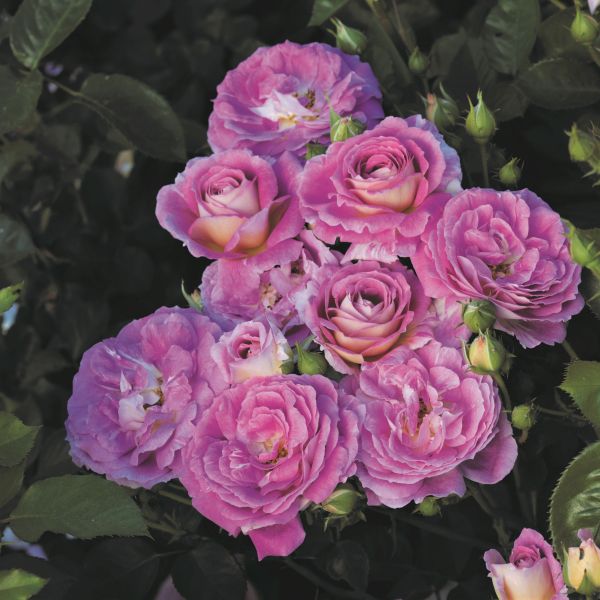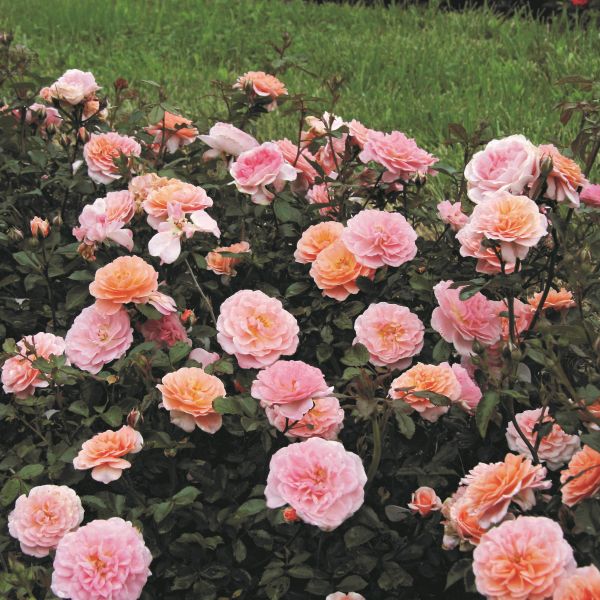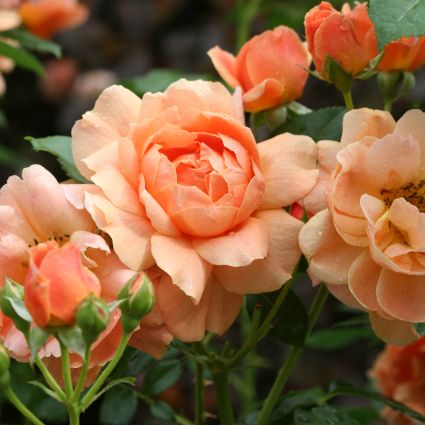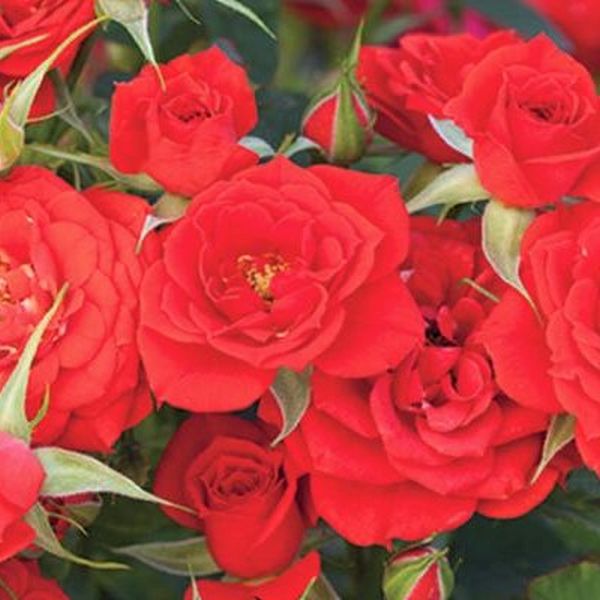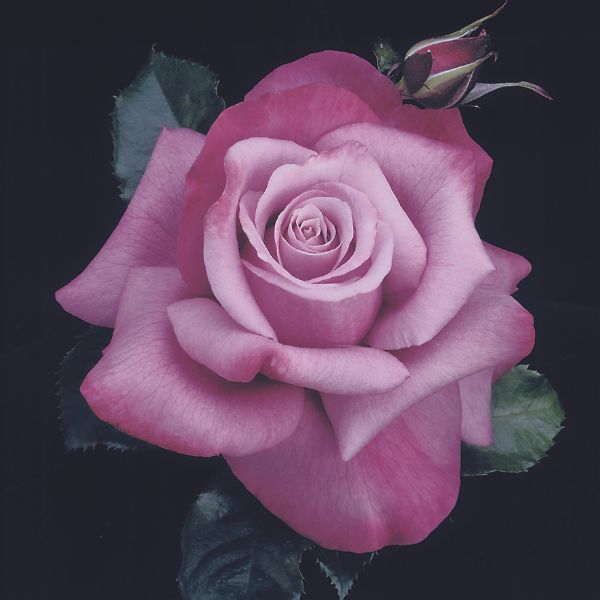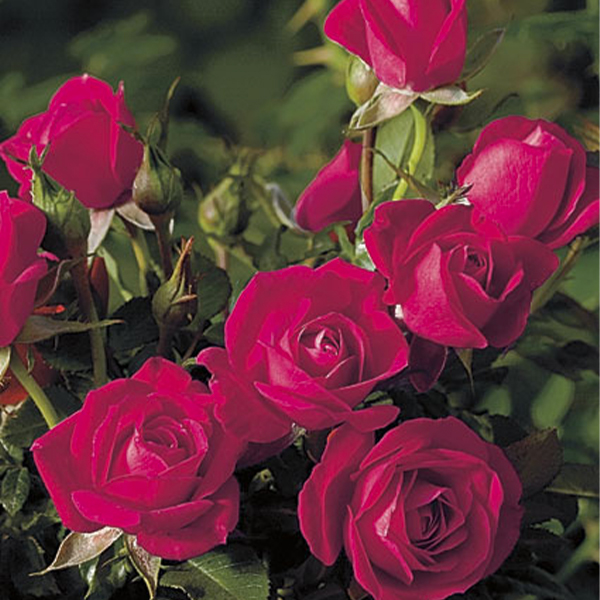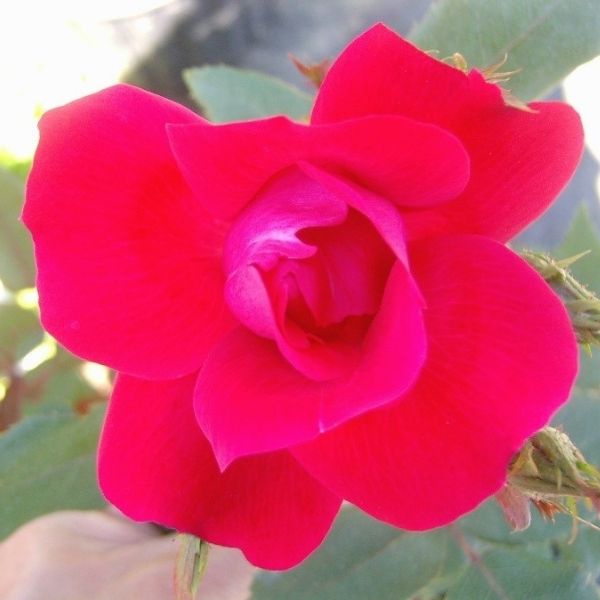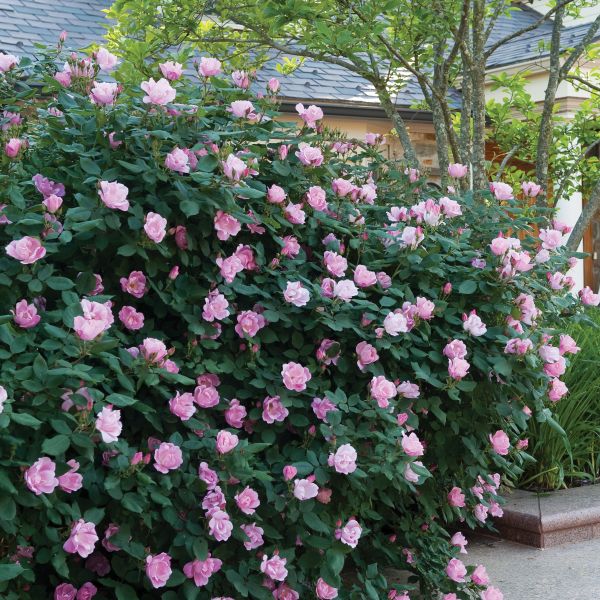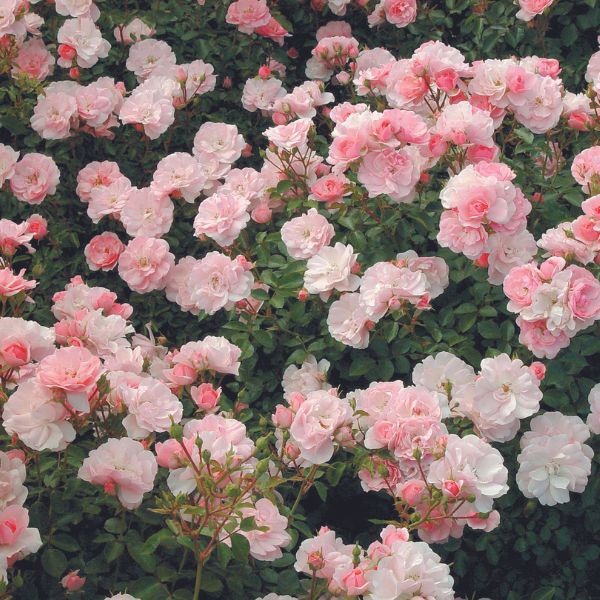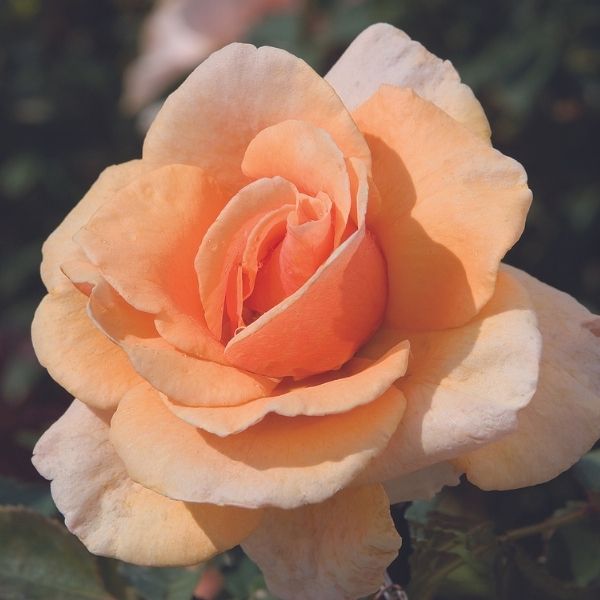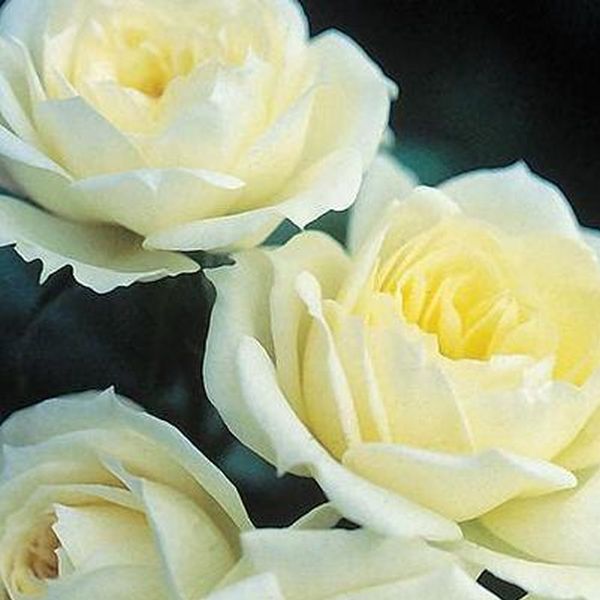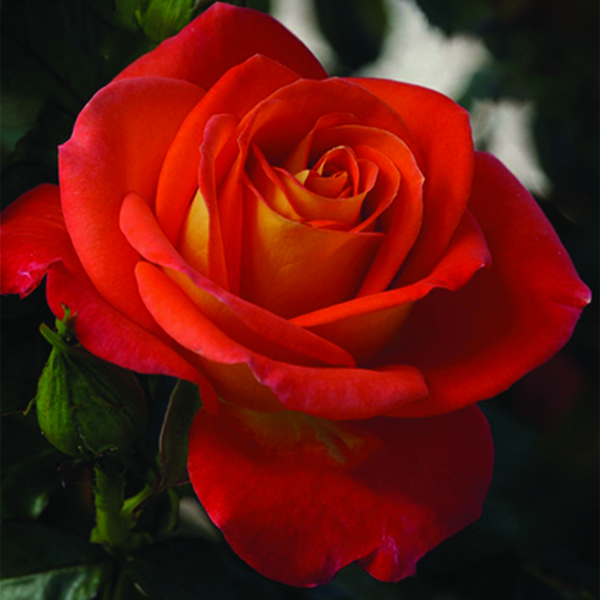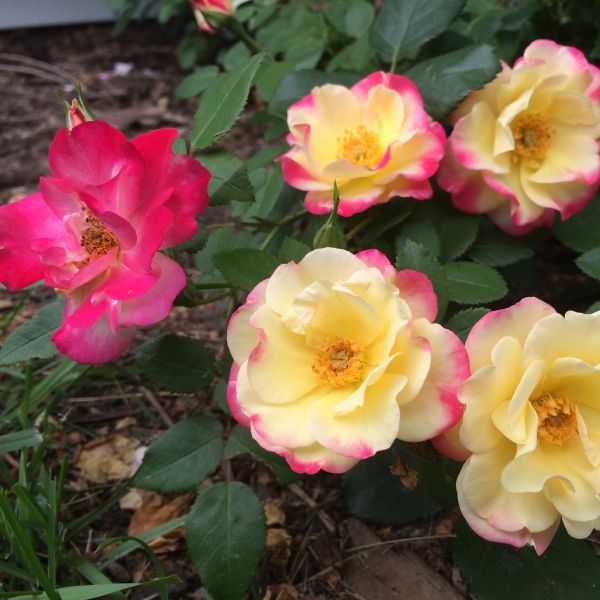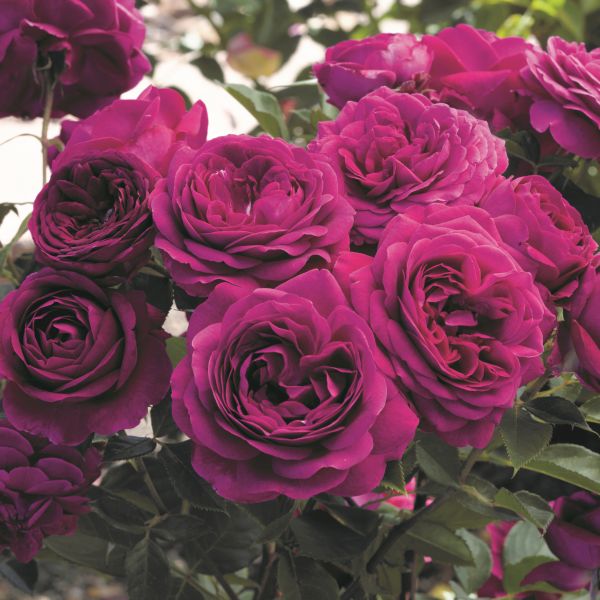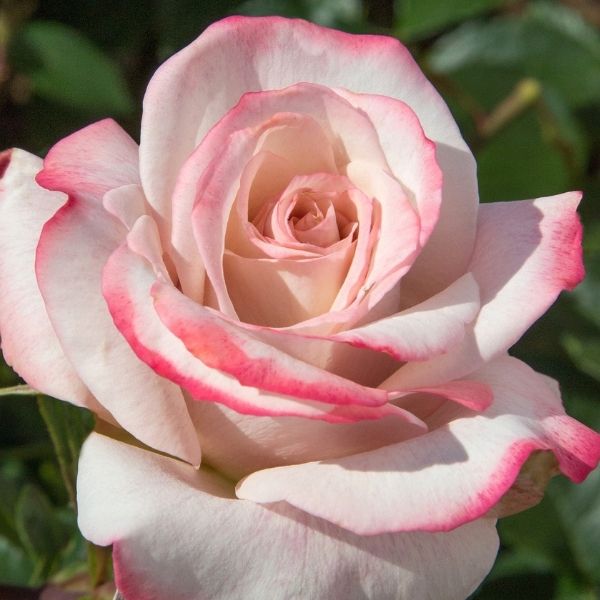
Pinkerbelle Rose
Rosa 'Meivanae'
9 reviews
Pinkerbelle Rose
Rosa 'Meivanae'
9 reviews
- Fragrant and long-lasting blooms
- Beautiful pink color adds a pop of color to any garden
- Easy to care for and low maintenance
- Recommended by landscape designers for optimal fit in real yards
$110.00
$158.00
30% Off
- Ships to 43215 in 3 to 7 days
- Free Shipping Over $150
- Plant Arrival Guarantee
- In Stock
- Free Plant Consult
$200 - Landscape-Approved: Every Plant We Sell Comes With Design Expertise Behind It
2.5 Gallon
Not just beautiful - intentionally selected by ShrubHub's 3D landscape design team to fit real-world spaces and maximize yard potential.
Why Pinkerbelle Rose?
Pinkerbelle Rose (Rosa 'Meivanae') is a popular choice for its unique pink blooms and enchanting fragrance. This hybrid tea rose variety is known for its strong, upright growth and disease resistance. With its elegant appearance and long blooming season, Pinkerbelle Rose adds a touch of romance to any garden or floral arrangement. Its stunning color and delightful scent make it a favorite among rose enthusiasts.
People who loved this plant also bought
Sunlight
Pinkerbelle Rose requires full sun to thrive.
Watering
The Pinkerbelle Rose has a moderate watering requirement. It should be watered regularly, keeping the soil consistently moist but not waterlogged. It is important to provide enough water to prevent drought stress, especially during hot and dry periods.
Fertilizing
The fertilizer requirement for Pinkerbelle Rose may vary based on factors such as soil conditions, climate, and plant health. It is best to consult with a local nursery or expert for specific recommendations to ensure optimal growth and bloom.
Pinkerbelle Rose (Rosa 'Meivanae')
The Pinkerbelle Rose (Rosa 'Meivanae') is a captivating and elegant rose variety that is cherished for its stunning flowers and vigorous growth. This hybrid tea rose, developed by Meilland International, features beautiful bright pink blooms that make it a standout in any garden or landscape.
The Pinkerbelle Rose is known for its large, fully double flowers with a classic rose shape. Each bloom consists of about 30-40 petals that exhibit a rich pink color, which deepens towards the center. The petals are slightly waved, giving the flower a touch of charm and uniqueness. The flowers are carried on long and sturdy stems, making them perfect for cutting and creating exquisite floral arrangements.
This rose variety not only delights with its exceptional beauty, but it also offers a pleasant fragrance. The Pinkerbelle Rose emanates a sweet scent that adds an enchanting touch to any garden or outdoor space. Its fragrance has a mix of fruity and floral notes, creating a captivating olfactory experience.
In terms of growth habits, the Pinkerbelle Rose is a moderately tall shrub that can reach a height of around 3-4 feet (90-120 cm) and has a spread of approximately 2-3 feet (60-90 cm). The plant displays a vigorous and upright growth pattern, with sturdy stems and glossy dark green foliage that provides an attractive backdrop to the vibrant flowers.
This rose variety is relatively disease resistant, showing good tolerance to common rose diseases such as black spot and powdery mildew. It thrives in full sun, requiring at least 6 hours of direct sunlight per day to ensure optimal blooming and plant health. Adequate watering and regular fertilization will help maintain the Pinkerbelle Rose's vigor and longevity.
Whether planted in flower beds, borders, or used as a focal point, the Pinkerbelle Rose will undoubtedly bring beauty and elegance to any garden. Its captivating pink flowers, delightful fragrance, and robust growth make it a favorite among rose enthusiasts and gardeners alike.
Plant Information:
| Botanical Name: | Rosa 'Meivanae' |
| USDA Zones: | 5 - 10 |
| Water: | Moderate |
| Exposure: | Full Sun |
| Soil Needs: | Well Drained |
| Mature Height: | 4 - 6 feet |
| Mature Spread: | 3 - 4 feet |

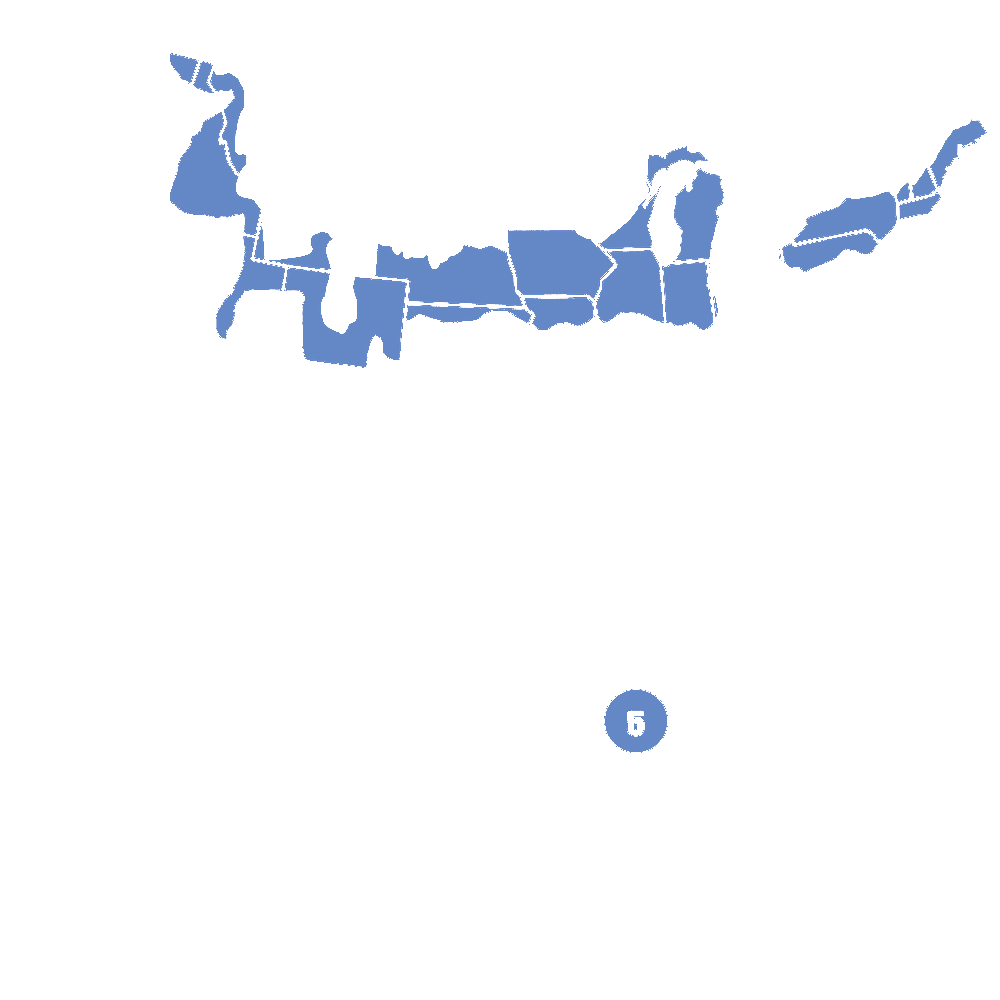
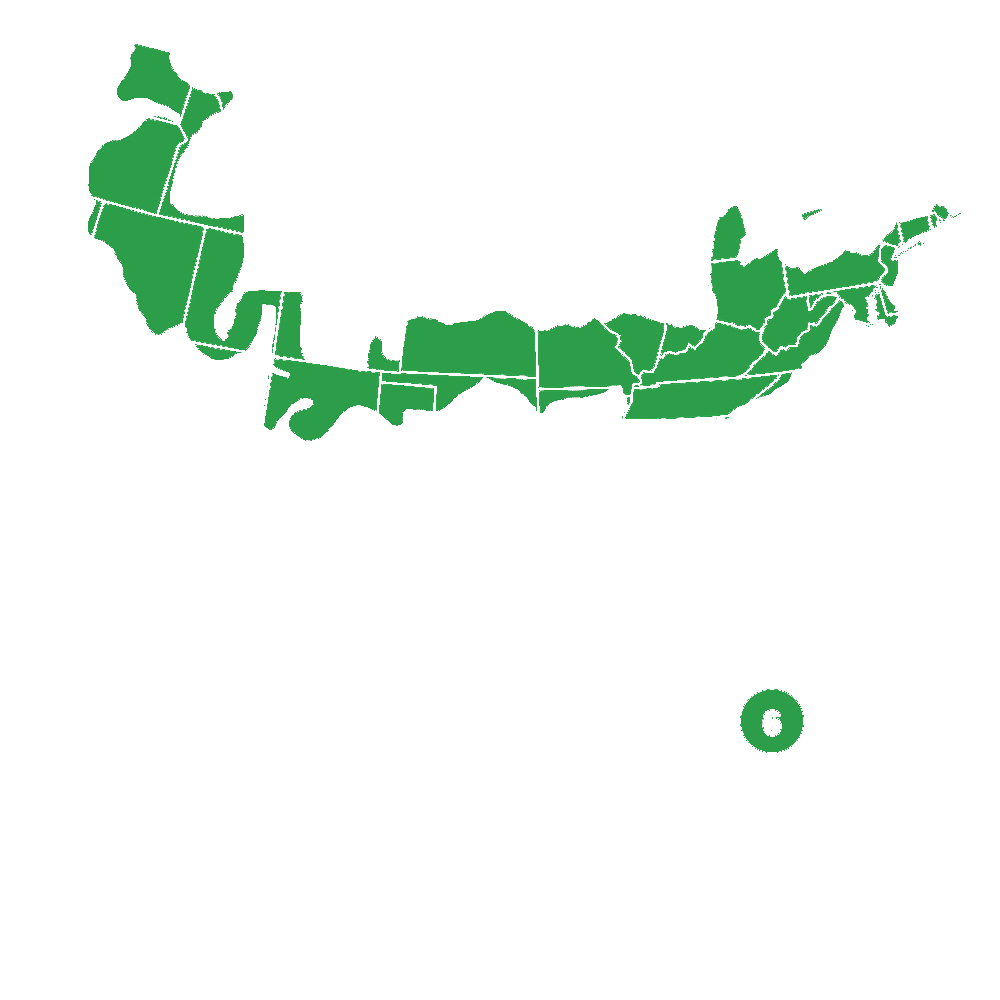

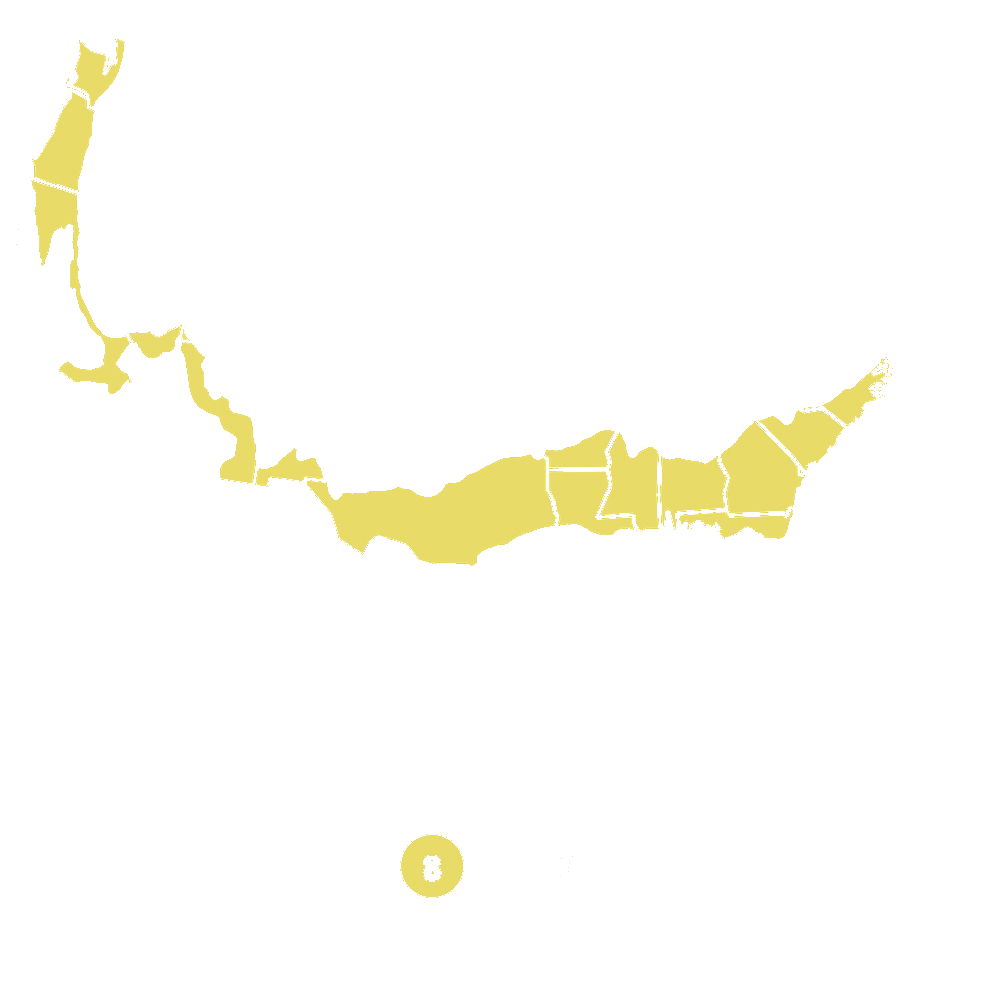
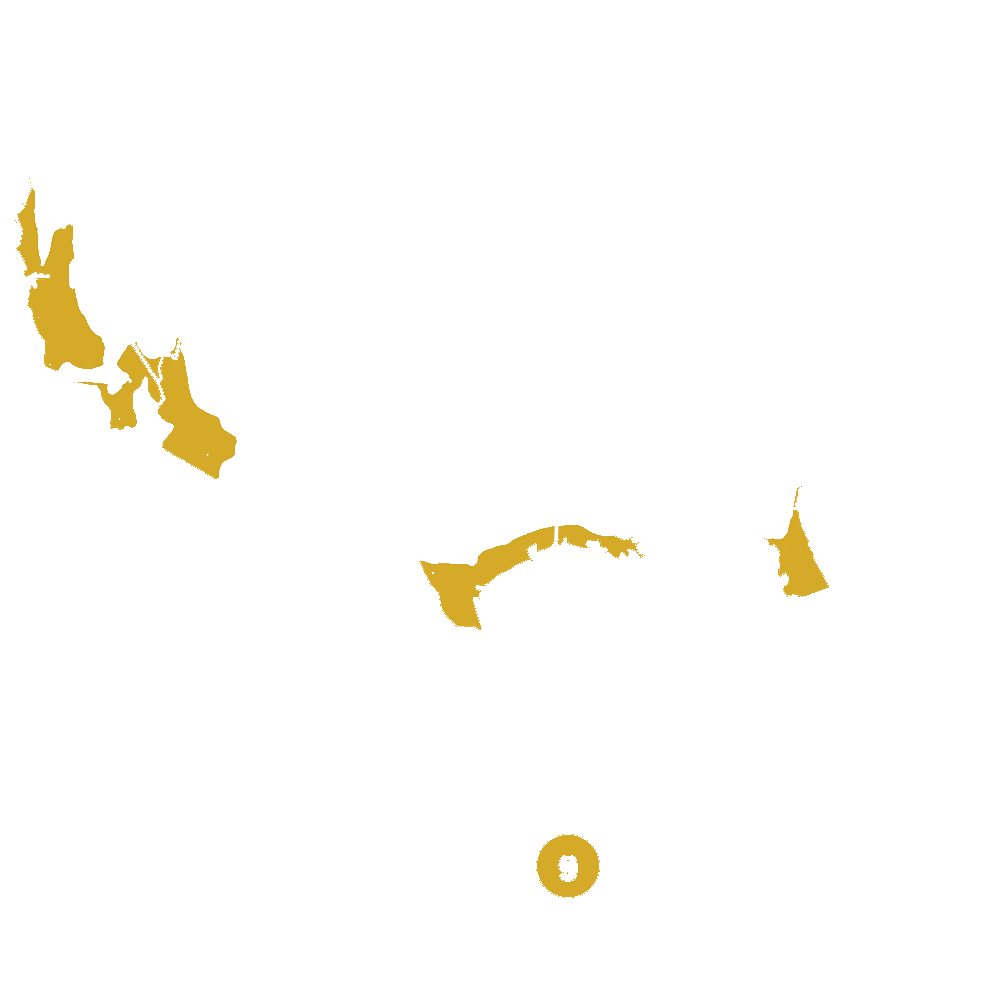

Pollination Info
Pollination Information for Pinkerbelle Rose (Rosa 'Meivanae')
- Pollination Type: Self-pollinating (partially self-fertile)
- Flower Characteristics: The Pinkerbelle Rose produces large, double blooms with a vibrant pink color. Each flower is composed of numerous petals and emits a pleasant fragrance.
- Pollen Production: Abundant
- Pollen Color: Yellow
- Best Pollinators: While the Pinkerbelle Rose is self-pollinating, pollinators such as bees, butterflies, and other insects can help facilitate cross-pollination, which can enhance the quality and quantity of the resulting seeds or fruits.
- Planting Considerations: To maximize the chances of cross-pollination, it is recommended to plant Pinkerbelle Roses alongside other compatible rose varieties or other flowering plants that attract pollinators. This can create a beneficial environment for natural pollination to occur.
- Time of Pollination: The Pinkerbelle Rose blooms during the spring and summer months. It is during this time that pollination takes place. The flowers are receptive to pollination when they are fully open and the stamens are shedding yellow pollen.
- Pollination Process: Insects, primarily bees and sometimes butterflies or other pollinators, visit the flowers in search of nectar. As they move from flower to flower, they inadvertently transfer pollen from the stamens (male reproductive organs) to the stigma (female reproductive organ) of the flowers, enabling pollination to occur. Following successful pollination, seeds or fruits can develop.
- Special Notes: The Pinkerbelle Rose is known for its ability to self-pollinate, but cross-pollination can still benefit the plant. It is important to ensure that the flowers are not sprayed with any harmful chemicals that can repel pollinators or contaminate the pollen.
FAQ
Pinkerbelle Rose (Rosa 'Meivanae') FAQ
1. What is the Pinkerbelle Rose?
The Pinkerbelle Rose, scientifically known as Rosa 'Meivanae', is a beautiful hybrid tea rose variety. It features stunning blooms in a soft pink color and has a strong, sweet fragrance. This rose is highly acclaimed for its exceptional beauty and garden performance.
2. How big does the Pinkerbelle Rose grow?
The Pinkerbelle Rose typically grows to a height of about 3 to 4 feet, with a spread of 2 to 3 feet. It has an upright, bushy form and dense foliage that adds elegance to any garden.
3. When does the Pinkerbelle Rose bloom?
This rose variety blooms throughout the summer, starting from late spring until the first frost. Each bloom lasts for several days, making it a long-lasting addition to your garden.
4. How do I care for the Pinkerbelle Rose?
Here are some care tips for your Pinkerbelle Rose:
- Plant in well-drained soil with full sun exposure (at least 6 hours of direct sunlight per day).
- Water regularly, aiming for about 1 inch of water per week. Ensure that the soil doesn't become soggy.
- Fertilize with a rose-specific fertilizer once a month during the growing season.
- Prune your Pinkerbelle Rose in early spring to remove dead or damaged branches and promote new growth.
- Apply a layer of mulch around the base of the plant to conserve moisture and suppress weed growth.
5. Is the Pinkerbelle Rose disease-resistant?
Yes, the Pinkerbelle Rose is known for its excellent disease resistance, particularly against common rose diseases like blackspot and powdery mildew. However, it's still advisable to keep an eye out for any signs of disease and take appropriate measures promptly to maintain its health.
6. Can I grow the Pinkerbelle Rose in a container?
While it is possible to grow the Pinkerbelle Rose in a container, it may require extra care and attention compared to being planted in the ground. Ensure that the container is large enough to accommodate the plant's growth and provides adequate drainage. Regular watering and fertilization are crucial, as container plants tend to dry out faster. Consider using a potting mix formulated for roses. Remember to place the container where the rose receives ample sunlight.
7. Can I use Pinkerbelle Roses for cut flower arrangements?
Absolutely! The Pinkerbelle Rose's beautiful blooms and sweet fragrance make it an excellent choice for cut flower arrangements. Cut the stem at an angle and place the roses in clean, fresh water with floral preservatives. Keep them in a cool location away from direct sunlight to prolong their vase life.
8. How can I propagate the Pinkerbelle Rose?
The Pinkerbelle Rose can be propagated through various methods such as stem cuttings and grafting. It's recommended to seek guidance from experienced gardeners or consult rose propagation experts for detailed instructions and assistance.
9. Where can I purchase the Pinkerbelle Rose?
You can purchase the Pinkerbelle Rose from reputable nurseries, online plant stores, or specialized rose suppliers. Local garden centers and rose societies may also offer this variety. Make sure to choose healthy plants from reliable sources.
10. Are there any similar rose varieties to Pinkerbelle?
If you enjoy the characteristics of the Pinkerbelle Rose, you may also be interested in other hybrid tea roses such as 'Double Delight', 'Mister Lincoln', 'Peace', or 'Queen Elizabeth'. These varieties exhibit vibrant colors, strong fragrances, and similar growth habits to the Pinkerbelle Rose.
Planting & Care
Pinkerbelle Rose Planting & Care
Rosa 'Meivanae'
Planting:
- Choose a sunny location with well-draining soil.
- Prepare the soil by removing any weeds or grass and loosening it with a garden fork.
- Dig a hole that is wide and deep enough to accommodate the root ball of the plant.
- Place the Pinkerbelle Rose in the hole, ensuring that the bud union (the swollen area at the base of the plant) is level with or slightly above the soil surface.
- Backfill the hole with soil, gently firming it around the roots.
- Water the plant thoroughly after planting to settle the soil.
- Apply a layer of mulch around the base of the plant to help retain moisture and suppress weeds.
Care:
- Water the Pinkerbelle Rose regularly, especially during dry periods. Ensure that the soil remains evenly moist but not waterlogged.
- Fertilize the plant in early spring with a balanced rose fertilizer according to package instructions.
- Prune in late winter or early spring to remove dead or damaged wood and to shape the plant. Cut back about one-third of the plant's height. Prune at a 45-degree angle, just above an outward-facing bud.
- Monitor the plant for common rose diseases such as black spot or powdery mildew. Treat with appropriate fungicides if necessary.
- Keep the area around the plant weed-free to reduce competition for nutrients and water.
- Monitor for pests such as aphids or Japanese beetles. Use organic or chemical controls as needed.
- During the winter, protect the plant from harsh frost by covering it with burlap or a plant cover. This is especially important for young plants.
Check Out These Verified Customer Reviews:
Customer Reviews
4.8 out of 5 based on 9 reviews
Thank you! Your review has been submitted.
Gorgeous addition to my collection.
Excellent quality and condition.
Highly recommended for all rose lovers.
Item has been added to your cart.



